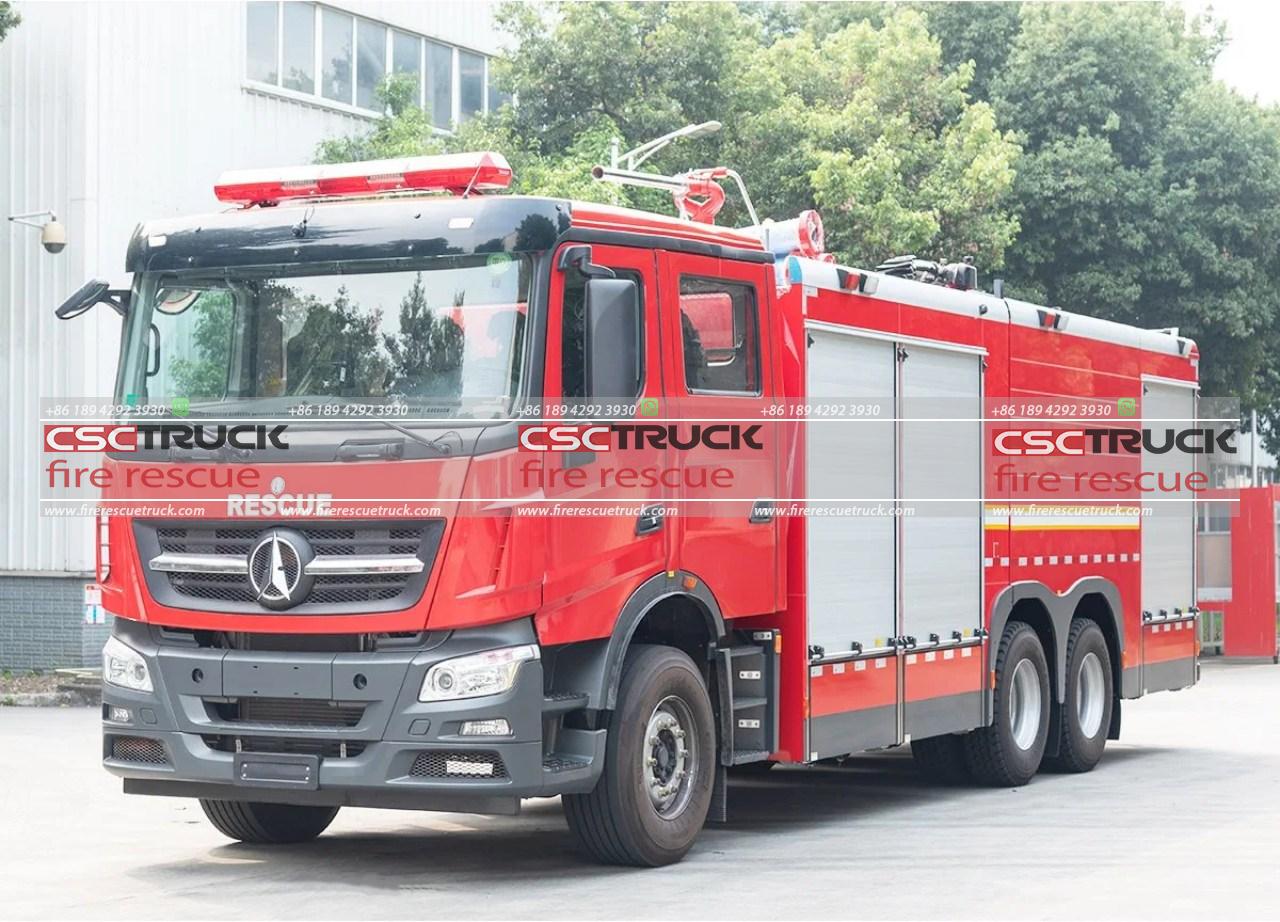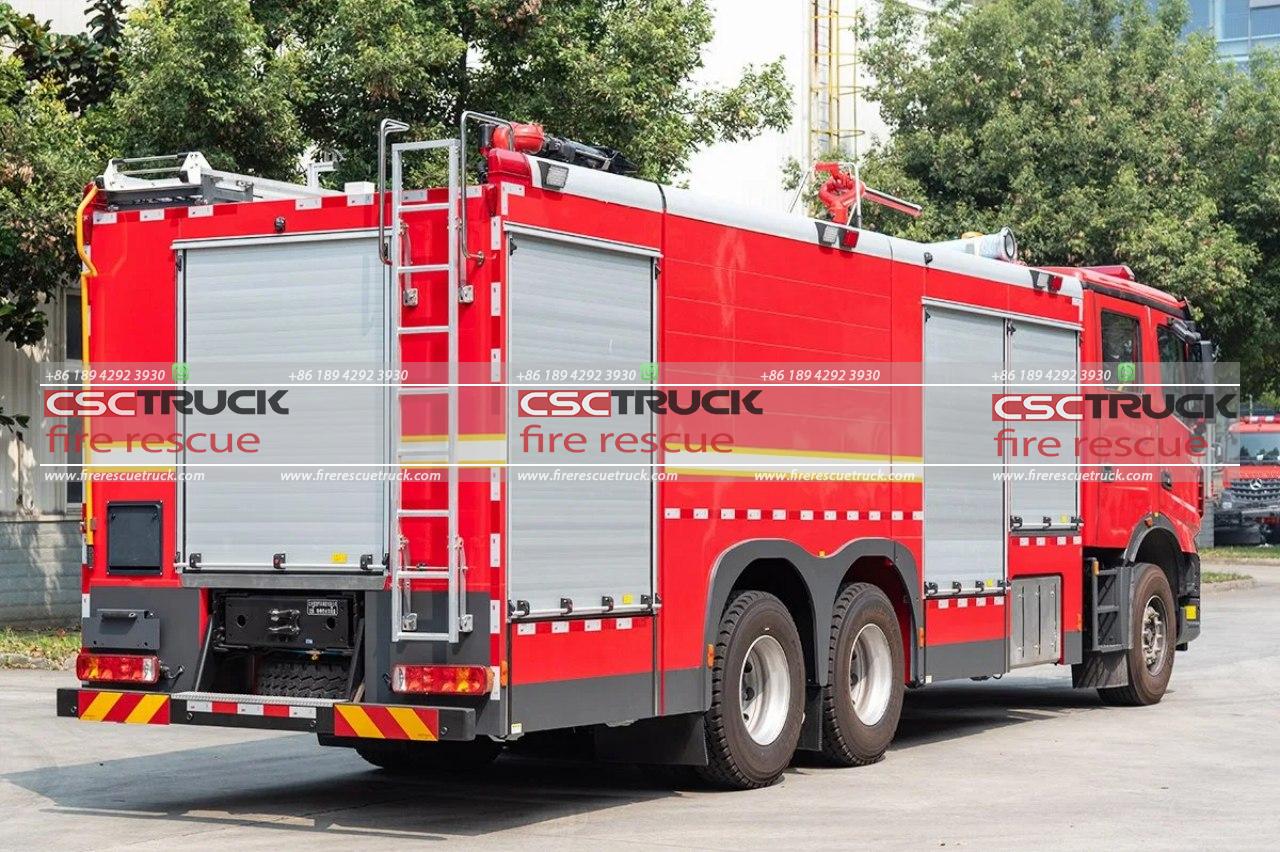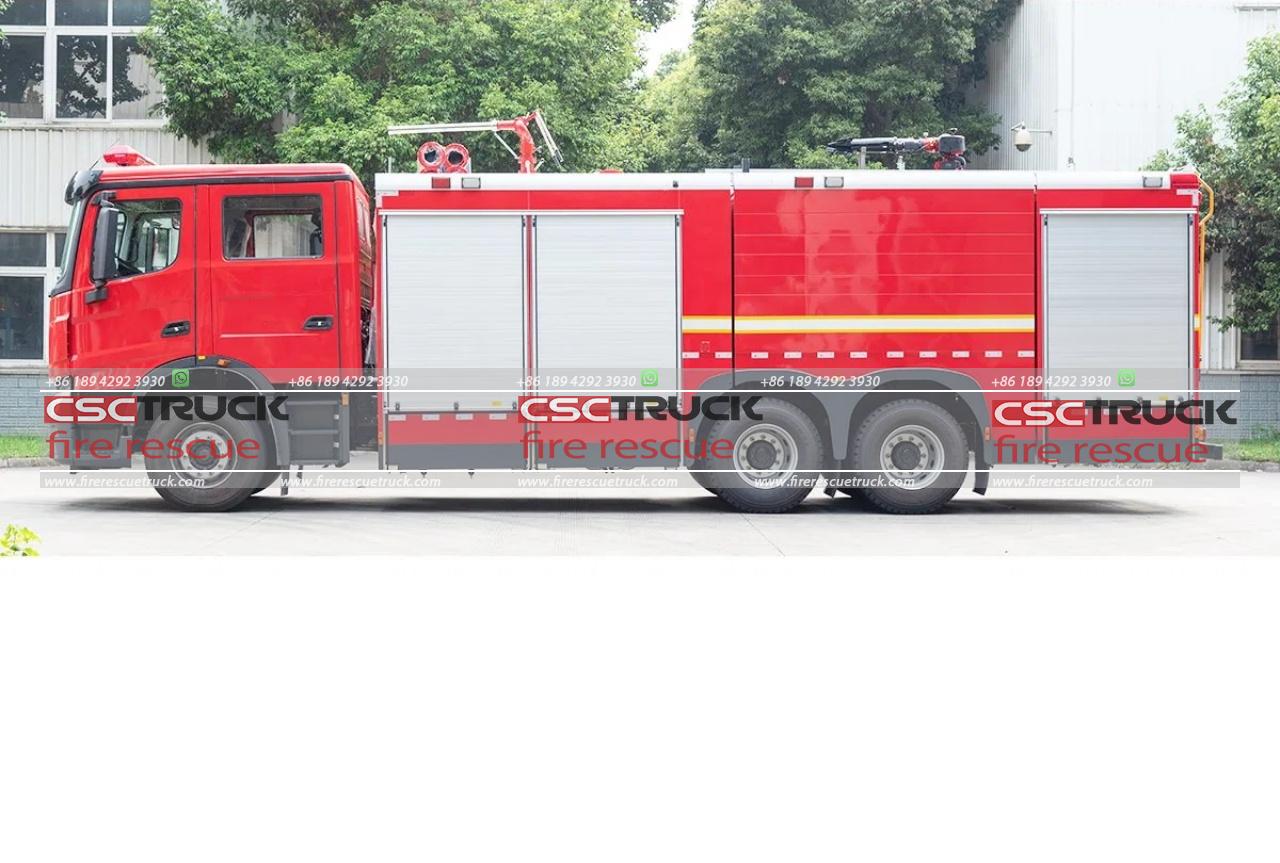What is a Tower Fire Truck?
When it comes to firefighting, specialized equipment is crucial for ensuring safety and effectiveness in battling fires, especially in complex urban environments. One such piece of equipment that plays a vital role in the fire service is the Tower Fire Truck. This vehicle, sometimes referred to as a tower ladder truck or simply a tower, combines the capabilities of a standard fire truck with the extended reach and versatility of a high-rise ladder. In this article, we’ll explore what exactly a tower fire truck is, its unique features, and how it enhances firefighting operations.
Understanding the Basics of a Tower Fire Truck
A tower fire truck is a type of aerial apparatus specifically designed to provide firefighters with an elevated platform for operations at height. It is distinct from other aerial devices, such as straight ladder trucks, by its equipped platform or bucket at the top of its boom. This design allows firefighters to reach heights and areas that are otherwise inaccessible with standard ground ladders.
Tower fire trucks are typically found in fire departments that handle a variety of emergencies, ranging from high-rise building fires and industrial accidents to rescue operations. These vehicles are indispensable for departments that frequently encounter challenging scenarios where elevated access, water delivery, or technical rescues are necessary.

Key Features of a Tower Fire Truck
1. Aerial Platform and Boom Configuration:
The defining feature of a tower fire truck is its aerial platform. Unlike a straight ladder truck, which only has a ladder for climbing, a tower fire truck has a boom arm with a large bucket or platform at its tip. This platform provides a stable working space for firefighters to operate from, whether it’s for directing a hose stream, rescuing trapped individuals, or conducting ventilation operations.
The boom of a tower fire truck typically has a telescoping mechanism that allows it to extend and retract as needed. Additionally, these trucks may feature an articulating arm, enabling them to maneuver around obstacles such as trees, signage, or other structural elements. The height and reach capabilities vary depending on the model, with some tower trucks able to reach heights exceeding 100 feet.
2. Waterway and Nozzles:
Tower fire trucks are equipped with built-in water delivery systems, including pipes that run along the boom and terminate in nozzles at the platform. These systems can handle high volumes of water, making the tower fire truck ideal for delivering water to elevated locations. The nozzles can be manually or remotely controlled, allowing for precise water stream placement even from a distance.
This feature is particularly beneficial when combating fires in high-rise buildings, where ground-level water streams may not be sufficient. Additionally, these nozzles can deliver water, foam, or other extinguishing agents, depending on the firefighting needs.
3. Stabilizers and Outriggers:
Stability is crucial for a tower fire truck, given the considerable weight and height of its aerial platform. To ensure the vehicle remains stable during operations, tower trucks are equipped with hydraulic outriggers or stabilizers. These extend from the sides of the truck and are firmly planted on the ground, providing the necessary balance and support.
The use of stabilizers is especially important when the aerial platform is extended to its maximum height or when it’s operating at extreme angles. Firefighters must position the vehicle on level ground and ensure that the outriggers are fully deployed before extending the boom.
4. Control Systems and Safety Features:
Modern tower fire trucks are equipped with sophisticated control systems that allow operators to control the position and movement of the aerial platform with precision. These systems often include redundant safety features, such as load sensors and automatic leveling, to prevent tipping or overloading.
Many tower fire trucks also have monitoring systems that provide real-time data on factors such as wind speed, platform weight, and boom position. This information helps firefighters operate the vehicle safely, even in adverse conditions.

Applications of a Tower Fire Truck
Tower fire trucks are used in various situations, and their versatility makes them valuable assets in numerous emergency scenarios. Some of the primary applications include:
1. High-Rise Firefighting:
One of the most common uses of tower fire trucks is in high-rise firefighting. The elevated platform allows firefighters to access upper floors quickly, provide ventilation, and deliver water streams directly to affected areas.
2. Rescue Operations:
The stable platform and extendable boom make tower fire trucks ideal for rescuing individuals trapped in high places. This could include people stranded on balconies, construction workers stuck on scaffolding, or individuals needing evacuation from windows during a fire.
3. Aerial Master Streams:
In large-scale fires, the ability to deliver massive amounts of water from above can make a significant difference. Tower fire trucks can be set up as aerial master stream devices, allowing for concentrated water delivery to extinguish fires that are difficult to reach from the ground.
4. Technical Rescues:
Tower fire trucks are not limited to fire suppression; they are also used in technical rescue operations. This could involve rescuing individuals from steep inclines, removing them from hazardous positions, or providing elevated access during confined space rescues.
Advantages and Limitations
Advantages:
– Height and Reach: Tower fire trucks can reach considerable heights and provide a stable platform for operations, making them ideal for high-rise firefighting and rescue operations.
– Water Delivery: Their built-in water systems make them effective for delivering high volumes of water or foam to elevated locations.
– Versatility: Tower trucks can be used for a wide range of emergencies, including fire suppression, rescue, and technical operations.
– Safety: The platform provides a safer working environment compared to ladders, reducing the risk of falls and allowing for more controlled movement.
Limitations:
– Size and Maneuverability: Tower fire trucks are large and require considerable space for deployment. This can be a limitation in congested urban areas or narrow streets.
– Setup Time: Setting up the stabilizers and positioning the boom can take time, which might delay operations in some cases.
– Cost: Due to their specialized nature and advanced features, tower fire trucks are more expensive to purchase and maintain than standard fire trucks.

Conclusion
In summary, a tower fire truck is a versatile and indispensable tool in the firefighting arsenal, combining the capabilities of a high-reaching platform with water delivery and rescue features. Its design and features allow firefighters to tackle complex scenarios safely and effectively. Despite some limitations, the advantages of tower fire trucks make them a valuable addition to any fire department, especially those tasked with managing high-rise buildings and complex urban environments. With ongoing advancements in technology and design, tower fire trucks continue to evolve, ensuring they remain a critical asset in safeguarding communities from the devastating effects of fire and emergencies.







